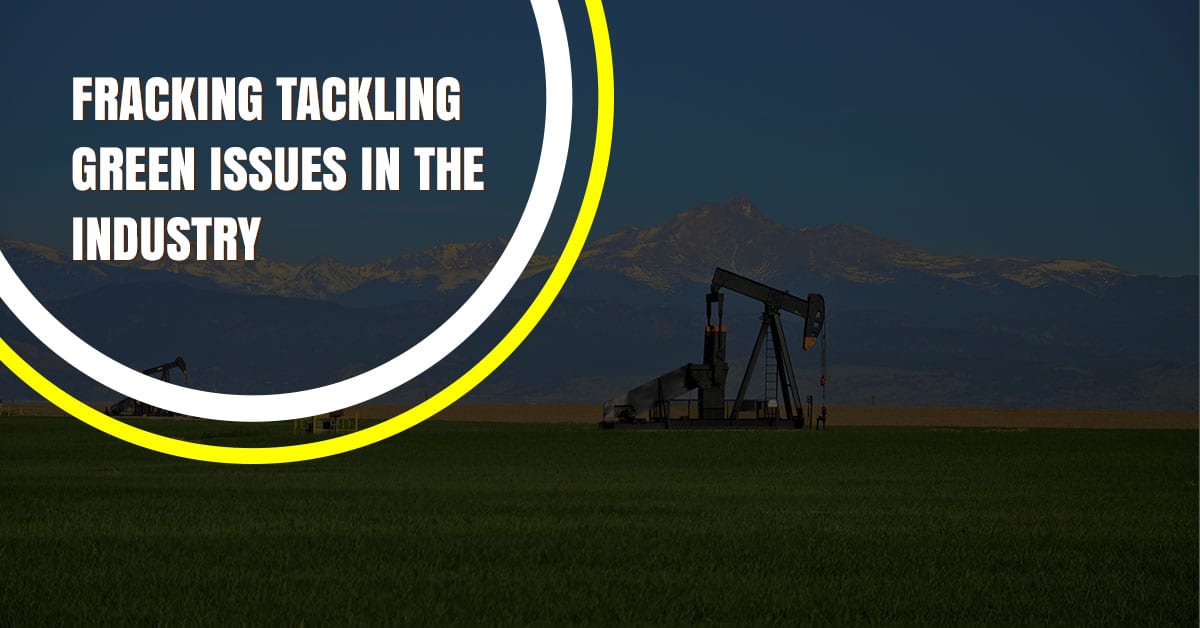We know you’re probably not used to hearing the words, hydraulic fracturing and green energy, in the same sentence, let alone the idea that fracking can help promote a cleaner energy future right here in America. We all know that natural gas has fewer carbon emissions than the oil and coal that have traditionally been used in order to power the ever growing energy needs in the United States.
There are often opposing forces when it comes to the fracking industry and environmental groups, however, there are a couple of things everyone can agree on.
The fracking industry and the continued use of natural gas has helped to phase out coal.
Prior to the viability of natural gas and hydraulic fracturing, coal was the dominant energy provider for a large portion of the nation’s energy production. However, coal also releases large quantities of CO2 into the environment. Natural gas can provide the same level of energy with less CO2 production, making it a much more feasible energy source.
But the carbon emissions aren’t the only emissions many environmentalists are concerned about. Methane is also a potent greenhouse gas. However, the fracking industry can greatly reduce the amount of methane that is released uncontrolled into the atmosphere with a little preventative action. Taking the time to plug methane leaks and to use the latest technology in pressure-monitoring pneumatic controllers can make a big difference in the methane that is unintentionally leaked.
Emissions aren’t the only concern. Water is too.
Because hydraulic fracturing uses water in order to release natural gas from shale beds, there is always some concern surrounding the quantity of water used and what happens to the brine and flowback after water has been used for fracking.
With continually diminishing water supplies in the West according to three peer-reviewed studies, the question regularly comes up concerning how to best use water and how to protect the water that we currently have. While fracking is not even close to the largest industrial utilizer of water, there are still many ways in which to manage water properly and help to reduce water usage that can help lead to a greener process. So what does that look like for the natural gas industry moving forward?
Proper Water Management and Treatment
Fracking fluid and water that is injected into natural gas wells, and then returns to the surface, cannot go back into traditional water sources. Water is stored in alternative fracking ponds or liquid storage tanks before it is addressed. There are two aspects of this process that can help to improve the amount of water that can be safely returned to the environment and reduce any risks.
The first is how the flowback, brine, and wastewater is managed. Proper handling and storage are important for protecting the environment and areas around frac operations. One of the biggest risks is simply due to poor handling when moving water from the rig to the liquid storage tanks. Proper training and tools can make this a much easier process.
The second option is to have wastewater removed from the frac operation site and treated at an offsite facility. There has been improved use and demand for wastewater treatment facilities in the fracking industry. This allows water to be cleaned to specific standards and returned to the water supply, instead of just being left in traditional in-ground fracking ponds to evaporate. Well Water Solutions is one company that can provide a variety of these services, from proper equipment to wastewater treatment, in order to provide fracking operations with optimal alternatives for their water management needs.
Reuse Flowback and Brine
One of the most interesting options for a fracking operation that is considered a green practice in the industry is the reuse of flowback and brine from the well. This helps to reduce the amount of water pulled from the environment and allows water to be used multiple times before it goes through a cleaning process. Flowback and brine are still very usable and effective for multiple different injections on multiple different wells, instead of dirtying fresh water each time.
Reduce Water Amounts Injected
When hydraulic fracturing initially was turned into a viable energy market, the transition was made from utilizing chemical compounds to a more cost-friendly, water-based fracking fluid. While this made the process more economically viable, it does consume a substantial amount of water. There are new technologies that allow fracking to use much less water, if any at all. Certain gels exist on the market that use 1/8th of the fluid and yield similar results.
Fracking and protecting the environment don’t have to be mutually exclusive. In fact, there are many ways to help manage water and treat it in order to help bring the used water full cycle. Here at Well Water Solutions, we’re dedicated to providing the best wastewater management supplies and treatment options for our clients. Contact us today for more information!



